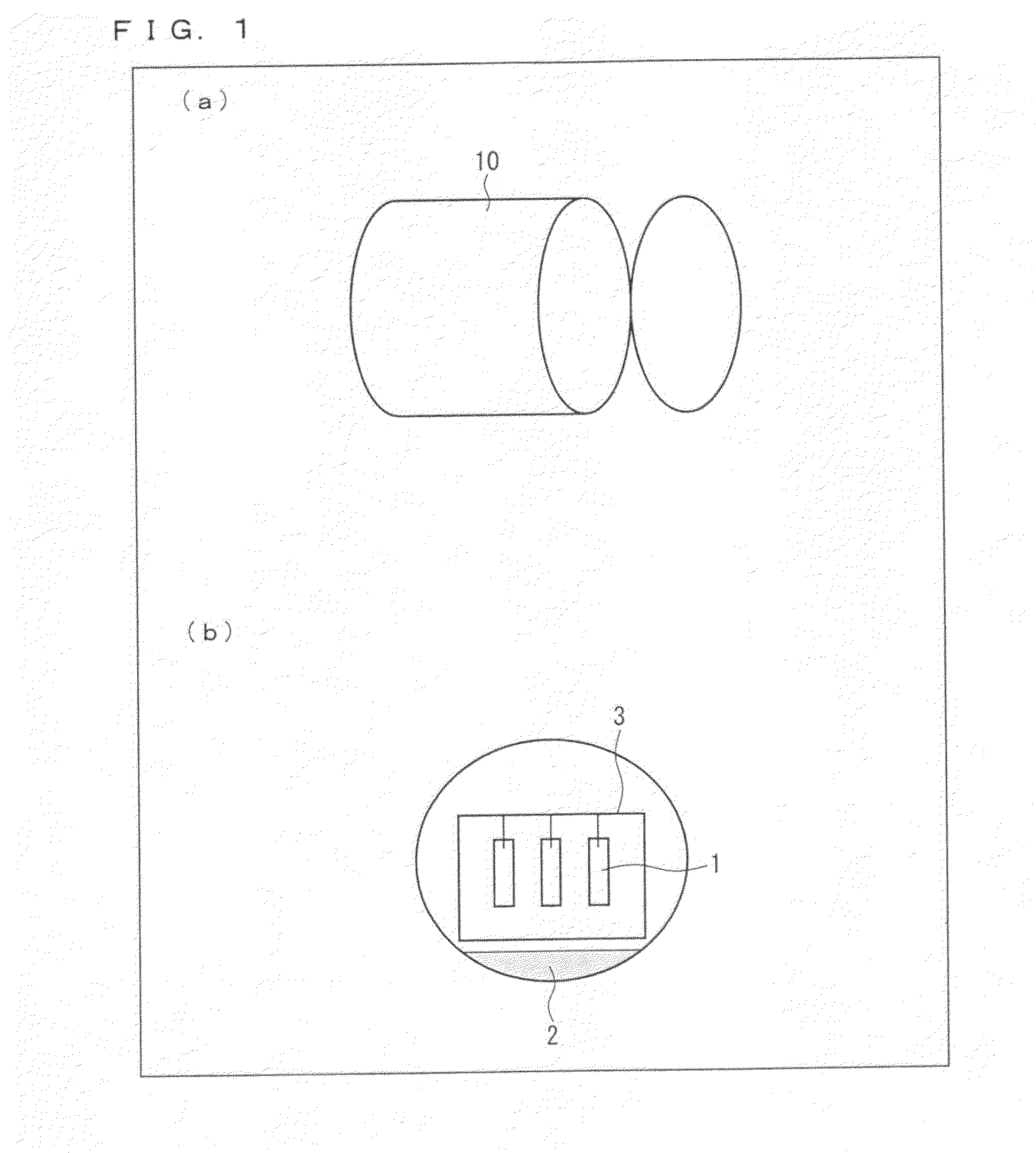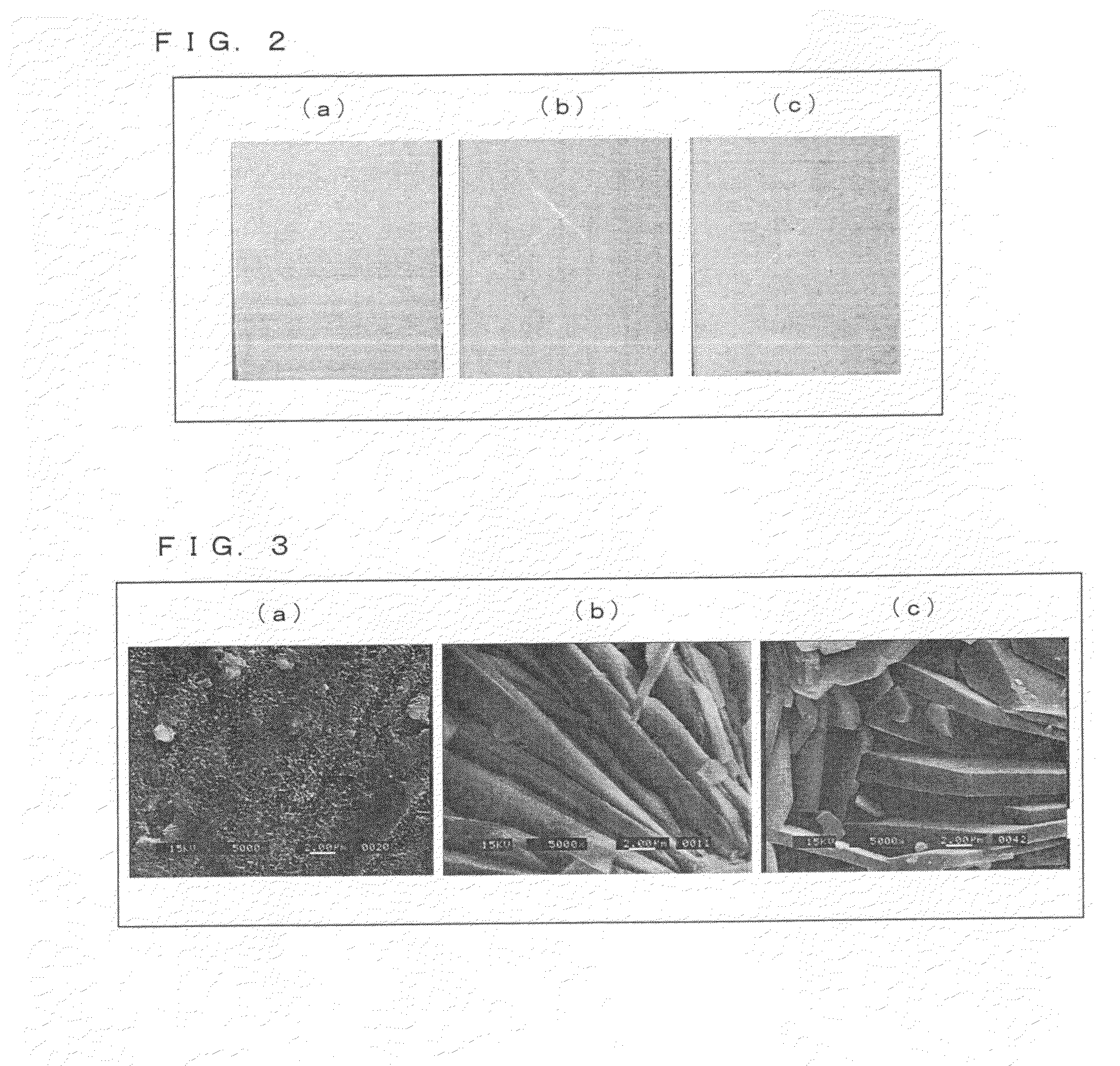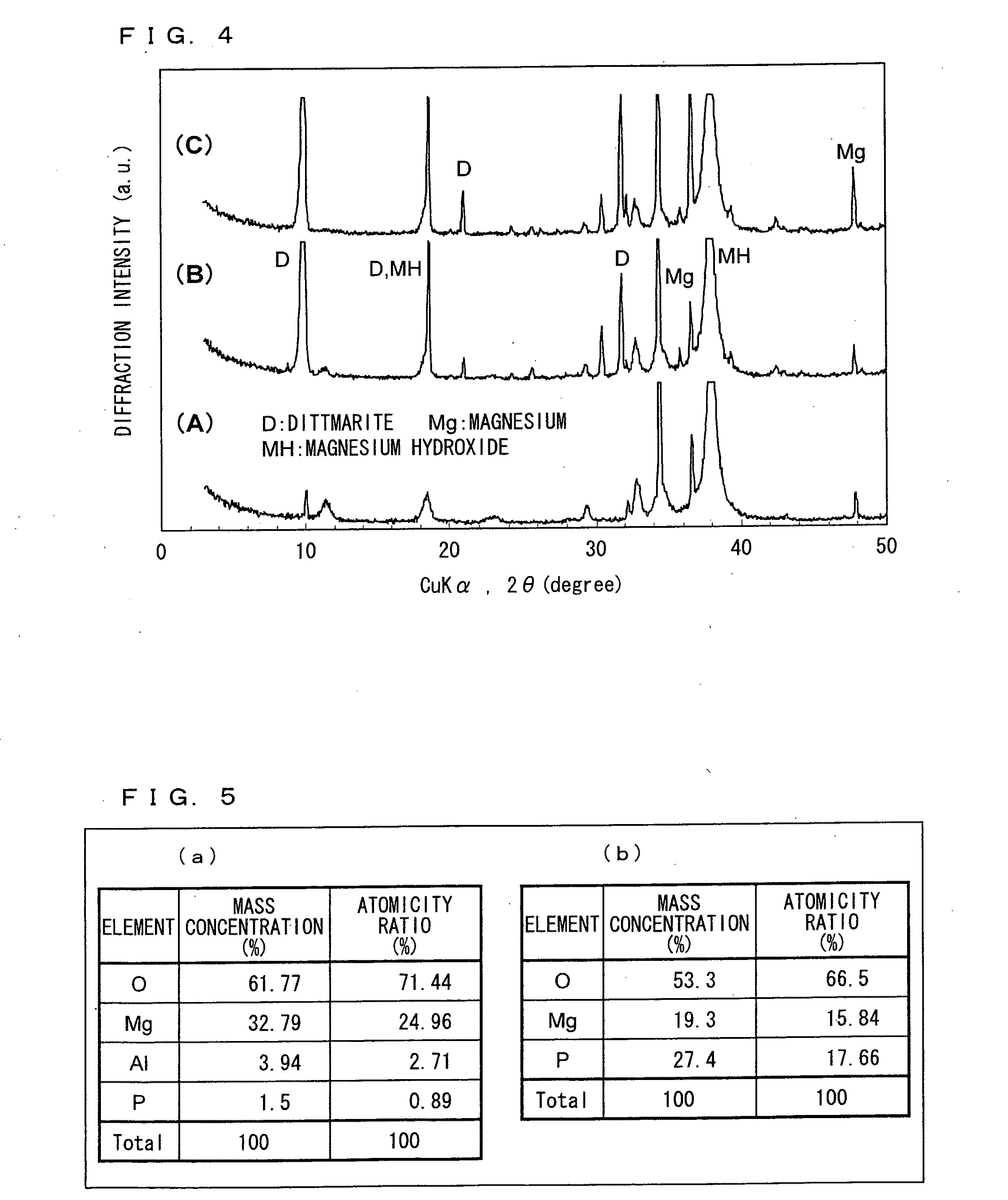Magnesium alloy material, and method for treatment of surface of magnesium alloy material
a magnesium alloy material and surface treatment technology, applied in the direction of transportation and packaging, chemistry apparatus and processes, etc., can solve the problems of increased cost and increase in the number of steps, difficulty in using solutions, and insatiable efficiency of surface treatment, etc., to achieve excellent corrosion resistance, reduce cost and increase the effect of surface treatmen
- Summary
- Abstract
- Description
- Claims
- Application Information
AI Technical Summary
Benefits of technology
Problems solved by technology
Method used
Image
Examples
example 1
[0112]The magnesium alloy material was put in the steam curing device at 140° C., and was treated using a 20% diammonium hydrogen phosphate solution during 24 hours. Post-treatment thickness, hardness and corrosion resistance are shown in Table 1. The test sample after immersion in the salt water solution is shown on (a) of FIG. 2. Results of an SEM observation of the test sample after steam curing are shown on (a) of FIG. 3. As shown on (a) of FIG. 3, small crystals were observable after steam curing. Further, as can be seen in the X-ray diffraction diagram in FIG. 4, peaks of dittmarite slightly appear, and peaks of magnesium hydroxide clearly appear (A of FIG. 4). Further, thanks to results of an elementary analysis shown in (a) of FIG. 5, it was understood that phosphate (P) has a 1.5% mass concentration.
example 2
[0113]After the magnesium alloy material had been put in contact with a 10% diammonium hydrogen phosphate solution at 120° C. during 2 hours, a resulting material was introduced in the steam curing device at 140° C., and treated using a 20% diammonium hydrogen phosphate solution during 24 hours. Post-treatment thickness, hardness and corrosion resistance are shown in Table 1. The test sample after immersion in the salt water solution is shown on (b) of FIG. 2. Results of an SEM observation of the test sample after steam curing are shown on (b) of FIG. 3. As shown on (b) of FIG. 3, tabular crystals, were observable after steam curing. Further, in the X-ray diffraction diagram in FIG. 4, peaks of dittmarite and peaks of magnesium hydroxide clearly appear (B of FIG. 4).
example 3
[0114]After the magnesium alloy material had been put in contact with a 20% diammonium hydrogen phosphate solution at 120° C. during 2 hours, a resulting material was introduced in the steam curing device at 140° C., and treated using 20% diammonium hydrogen phosphate solution during 24 hours. Post-treatment thickness, hardness and corrosion resistance are shown in Table 1. The test sample after immersion in the salt water solution is shown on (c) of FIG. 2. Results of an SEM observation of the test sample after steam curing are shown on (c) of FIG. 3. As shown on (c) of FIG. 3, tabular crystals were observable after steam curing. Further, in the X-ray diffraction diagram in FIG. 4, peaks of dittmarite and peaks of magnesium hydroxide clearly appear (C of FIG. 4). Further, thanks to results of an elementary analysis shown in (b) of FIG. 5, it was understood that phosphate (P) has a 27.4% mass concentration.
PUM
| Property | Measurement | Unit |
|---|---|---|
| Temperature | aaaaa | aaaaa |
| Temperature | aaaaa | aaaaa |
| Temperature | aaaaa | aaaaa |
Abstract
Description
Claims
Application Information
 Login to View More
Login to View More - R&D
- Intellectual Property
- Life Sciences
- Materials
- Tech Scout
- Unparalleled Data Quality
- Higher Quality Content
- 60% Fewer Hallucinations
Browse by: Latest US Patents, China's latest patents, Technical Efficacy Thesaurus, Application Domain, Technology Topic, Popular Technical Reports.
© 2025 PatSnap. All rights reserved.Legal|Privacy policy|Modern Slavery Act Transparency Statement|Sitemap|About US| Contact US: help@patsnap.com



